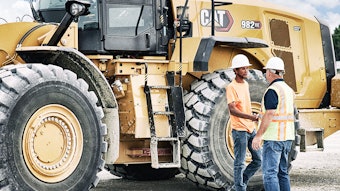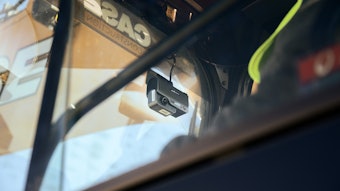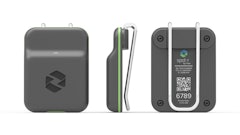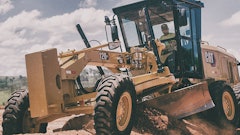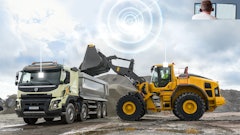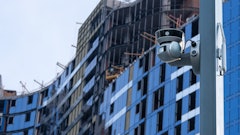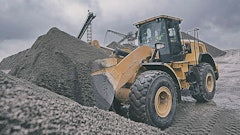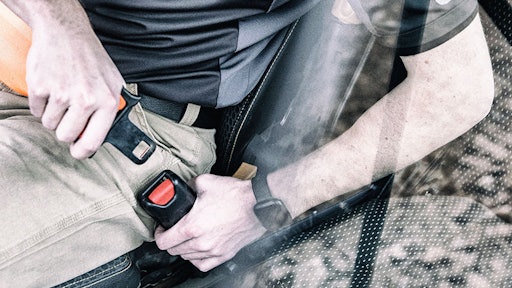
Any day is a good day to remind your team about the importance of safety on site. For a quick refresher, share these five steps for a safe shift with your heavy equipment operators today.
1. Walk Around the Machine First
Before you get in the cab, conduct a detailed walkaround. Doing so should only take 10-15 minutes, so don’t skip this step even if you’re in a hurry to start your shift. The Cat® Inspect app makes it easy.
- Look for cracked welds, loose lug nuts or bolts, black marks on the paint — anything that could cause a malfunction or indicate a safety issue.
- Remove any built-up debris or waste on the ladder or steps, where it could cause you to trip or fall.
- Scan the work area and make note of potential hazards. They may be easier to see while you’re still on the ground.
- Perform checks in the same order every day. That way, you’ll more likely notice if an issue needs addressed.
2. Climb On Right
That sounds simple enough — but did you know this is when most heavy equipment injuries occur? Always maintain three points of contact (two hands and one foot, or two feet and one hand) while facing the machine as you climb on or off equipment to prevent a fall. And never jump off the machine or try to get on or off a machine with tools or other items in your hands.
3. Buckle Yourself In
Why wear a seat belt when your machine doesn’t travel fast and you’ve got a rollover protection structure (ROPS)? A study was conducted comparing machines with and without ROPS and operators with and without seat belts on. Only when operators wore seat belts in a ROPS-protected cab were there zero fatalities. (Need a prompt to buckle up? Ask your Cat dealer about the Cat Seat Belt Reminder — it’s easy to install on any machine.)
4. Scan, Scan, Scan
Don’t get so caught up in the work that you forget to keep an eye on the work area. And don’t become over-reliant on cameras and safety technologies. They’re great tools, but nothing can take the place of looking and double-checking for yourself. Follow the three-point scan technique: Check your backup camera, check your mirrors, then check again by turning and looking in the direction you plan to move.
5. Leave as Safely as You Started
- Before you get out of the seat, put your machine in neutral or park, engage the parking brake and lower the implement.
- Remember to maintain three points of contact as you climb off the equipment.
- Perform a quick scan of the machine. Let your supervisor know if you spot any damage or problem indicators, so they can be corrected before the next shift.
- Check your surroundings for other equipment or vehicles before you walk away from your machine.
Keep the focus on safety year-round with these Toolbox Talks. They’re a great way to start a shift, with quick topics touching on equipment, attachment, personal and jobsite safety.





